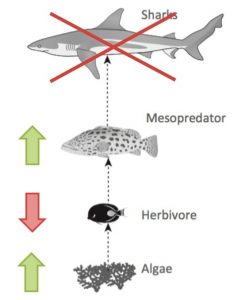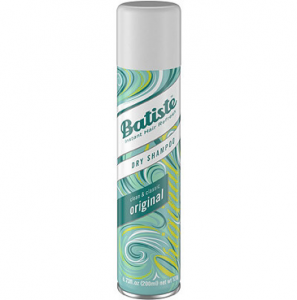When you’re shopping for body care products, whether it’s shaving cremes, lotions, shampoos/conditioners, bath or shower products, facial products or moisturizers, (and this list can continue), do you ever think how that specific product came to be? Do you even know what all is actually in the products you buy? Yes, the labels on the back can tell you, but do you know all of the chemical names and what they actually do to your body? One thing that most consumers can agree on is the thought of how we can look and feel beautiful while being on a budget. Well, LUSH Fresh Handmade Cosmetics decided to take it a step further and figured out how to be the best kind of beautiful naturally while being on a budget and equally being environmentally friendly. It’s a company based out of Canada that does just this for everyone, no matter what age, sex, race, or worldly background.
The company’s mission statement is as followed:
“We believe in making effective products from organic* fruit and vegetables, the finest essential oils and safe synthetics. We believe in buying ingredients only from companies that do not commission tests on animals and in testing on products on humans. We invent our own products and fragrances. We make them fresh* by hand using little or no preservative or packaging, using only vegetarian ingredients and tell you when they were made. We believe in happy people making happy soap, putting our faces on our products and making our mums proud. We believe in long candlelit baths, sharing showers, massage, filling the world with perfume and the right to make mistakes, lose everything, and start again. We believe our products are good value, that we should make a profit and that the customer is always right. We believe that all people should enjoy freedom of movement across the world. *We also believe words like “fresh” and “organic” have an honest meaning beyond marketing” (pg. 4).

LUSH’s co-founders have been creating products for over 30 years, but it wasn’t until after the loss of the original business, called Cosmetics to Go (CTG), that the brand’s innovators created the eco-friendly company that we know and love today. Mark and Karen Wolverton, who are Canadian business entrepreneurs, took a trip to London back in 1995. It was then and there that they first came in contact with LUSH and fell in love with the the philosophy and values behind the company as a whole. They later asked the founders if they’d thought of expanding their business into North America and in 1996, they did, opening the first North American LUSH store in Vancouver, BC, Canada. It wasn’t until 2003 that the first US LUSH store opened in San Francisco and today there are more than 250 shops across all of North America, with only 2 factories located in Toronto and Vancouver supplying their highly demanded products. “In October of 2014, we decided that we’d need to speed up our shipping times to customers. So we opened up digital fulfillment centers in Toronto and expand our distribution center..making us even more efficient by shipping shorter distances and reducing our overall carbon footprint” (pg. 17). It was also in 2014, that LUSH UK created their Lush Kitchen, which is the place where limited edition, exclusive products are created from a daily menu each week. Each Kitchen product is handmade and follows the strictly fresh policy while making the most of locally sourced ingredients. Customers can always shop from the Kitchen directly without having to cross the pond into the UK by following their social media accounts for a look at the latest menus and new products being sent out to stores.

The values of LUSH are the core of the brand as a whole and influence all that the company does. These values include always using the freshest ingredients, having all products handmade, making everything 100% vegetarian, creating “naked” packaging, buying ethically, fighting against animal testing, participating in charitable givings, implementing sustainable processes for the Earth, and getting involved in ethical campaigns.

On every recyclable black pot and bottle, they add a face sticker of the compounder who created the product along with their name, the date in which the product was made, a list of all of the ingredients used and when to use it by in order to ensure absolute freshness with maximum nutrient benefits. Every product in LUSH from the ones on the shelves to the actual shelves themselves and the other furniture in their stores are handmade in their very own woodshops. “Everything we do is made for us, by us..This way we can be sure that our products and shops are ethically sourced from beginning to end and that they’re of the finest quality” (pg. 34).

Not only do they create products that are fresh and 100% vegetarian, they’re also more than 80% vegan! For example, the glycerin that the company uses in their soap is made from non-GMO rapeseed oil instead of animal ingredients like most soap and cosmetic manufacturers use. In some cases, honey, yogurt, and eggs are used in products, but the company makes sure that that every ingredient is sourced from cruelty-free practices. The purpose of their ethical, organic buying is to help maintain sustainable farming practices and fair working conditions. Buying from small producer groups provides LUSH the opportunity to create positive change, increase sustainability, and create world-wide relationships. They even created the Sustainable Lush Fund, which takes 2% of the amount the company spends on packaging and raw materials and uses it to create sustainable farming and community projects from scratch around the world. Whenever someone buys a LUSH product, their money directly supports these Sustainable Lush Fund initiatives.
Other sustainable factors of the company include using as little to no packaging (otherwise known as “naked”) that’s recyclable, compostable, or biodegradable. They’re packaging in stores is also 100% post-consumer recycled plastic, which means that the pots have already been recycled at least once.They also have bags made 100% out of post-consumer paper. They also ship and wrap their products in 100% biodegradable plastic bags, recycled paper and biodegradable filler with eco-friendly packing tape. The company also monitors their fresh water resources to make sure they don’t overuse it. LUSH also works with their transportation providers to create low-impact and ethically responsible fuels for moving products worldwide. They also have a Green Team that are dedicated environmental advocates that are in store fronts and even behind the scenes in manufacturing to make sure that every product being made is environmentally safe (pg. 43).
Though they’re mostly known for the invention and innovations of new and exciting products throughout their past 30 years of business, the company is most commonly known for patenting the original bath bomb back in 1989. They’ve also patented toothy tabs, mouthwash tabs, and solid shampoo bars in order for everyone to experience the products just as they were originally imagined without any harmful additions. Since the very beginning, LUSH has created gender neutral products that don’t need excessive packaging or preservatives to stay fresh. The policies the company created then have always been rooted in trying to minimize the impact we as humans have on our environment and are continuing to do so every day. Stop by a LUSH store today to get a first hand experience into each and every product. There’s one conveniently located on King Street in Downtown Charleston! Maybe you’ll think about making the switch like I have into reusable, environmentally friendly, and 100% waste-free beauty products that not only come from the environment, but also continuously give back to their source – the Earth.

Resources:
The Lush Fresh Handmade Cosmetics: The Starter Guide Manual
https://www.lushusa.com
https://cvskinlabs.com/7-cosmetic-ingredients-that-are-bad-for-the-environment/











